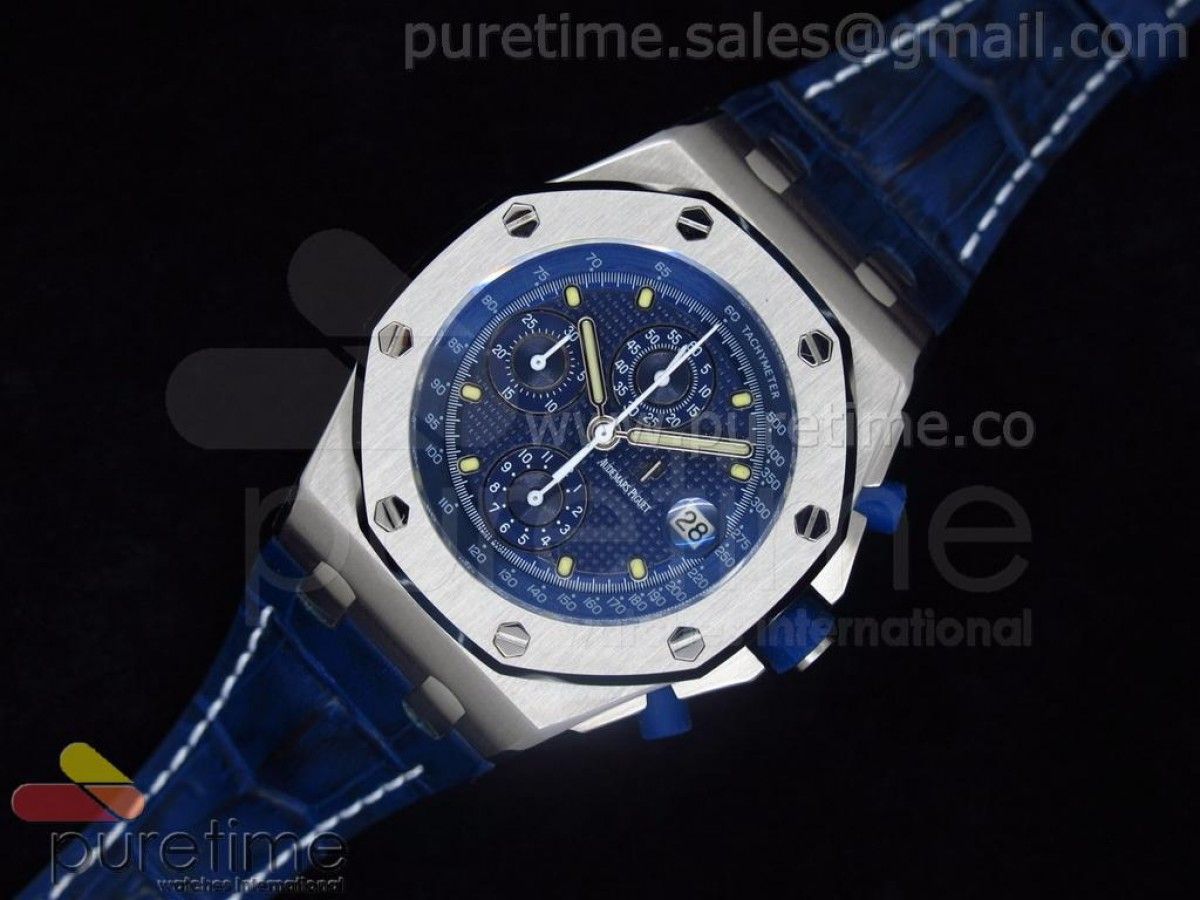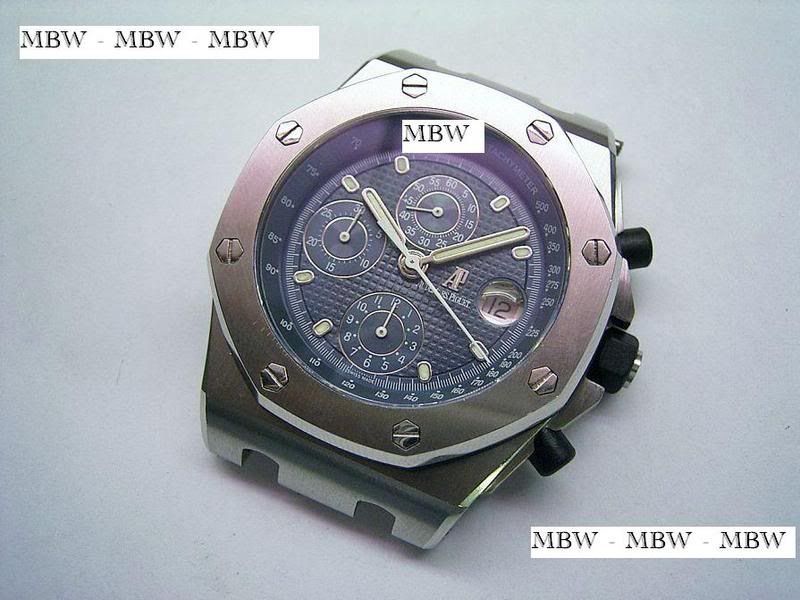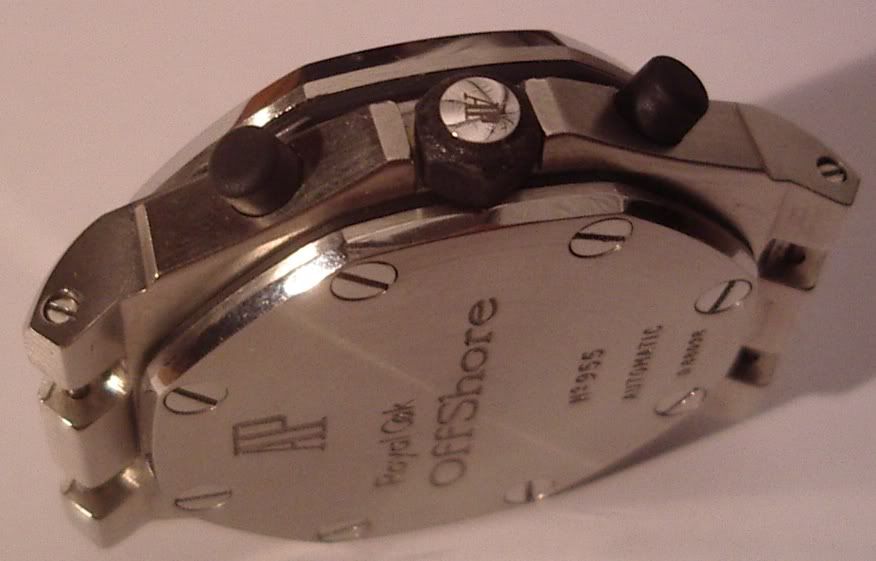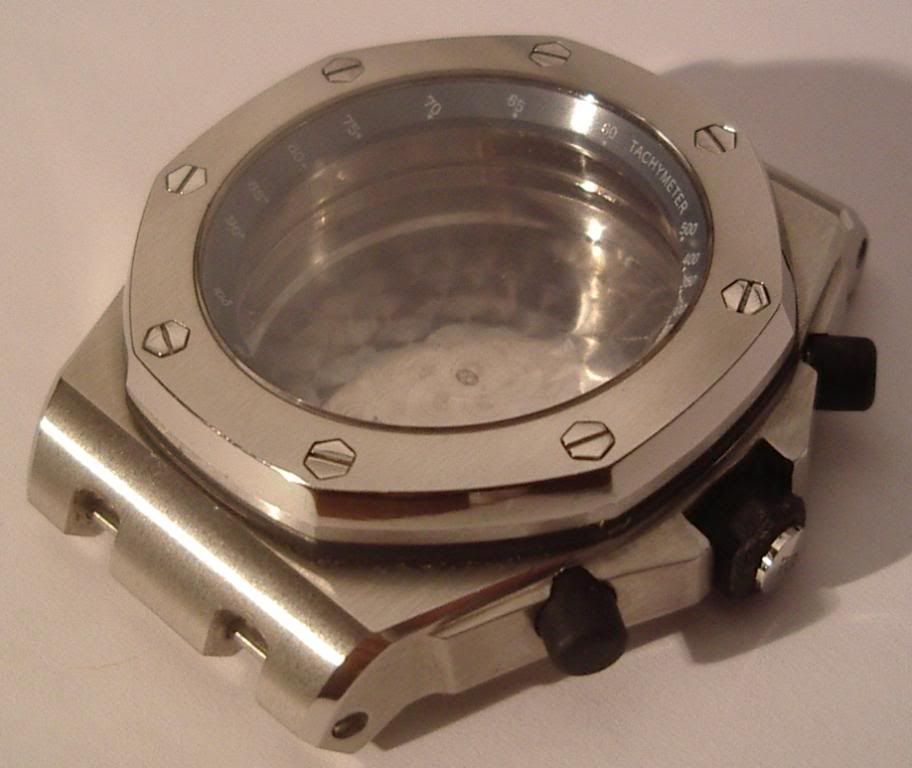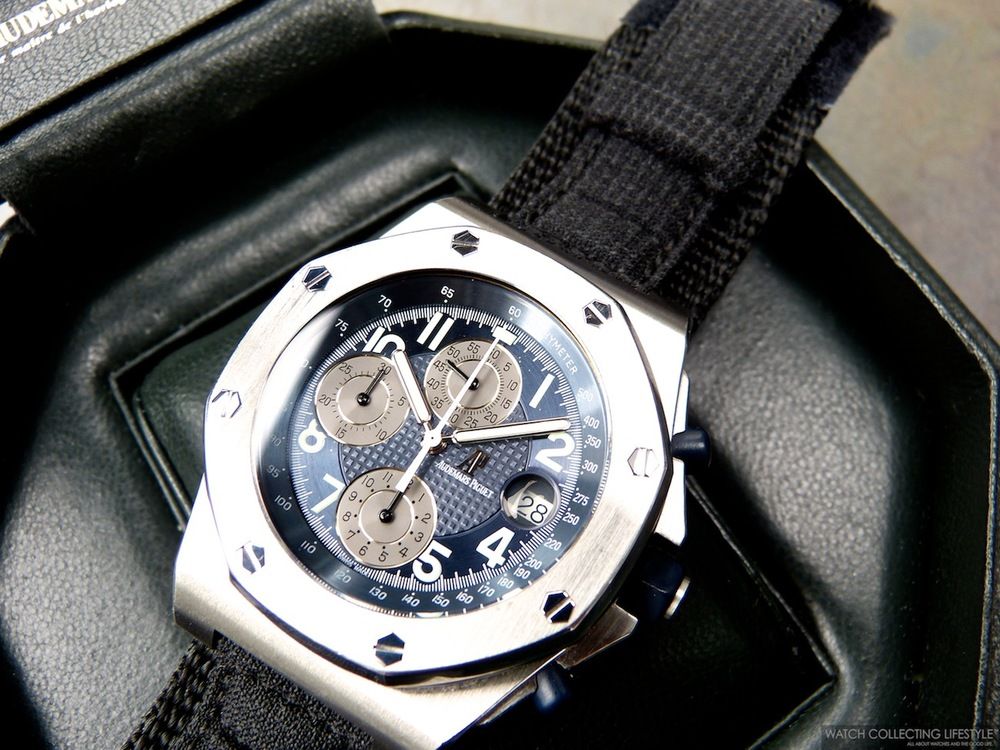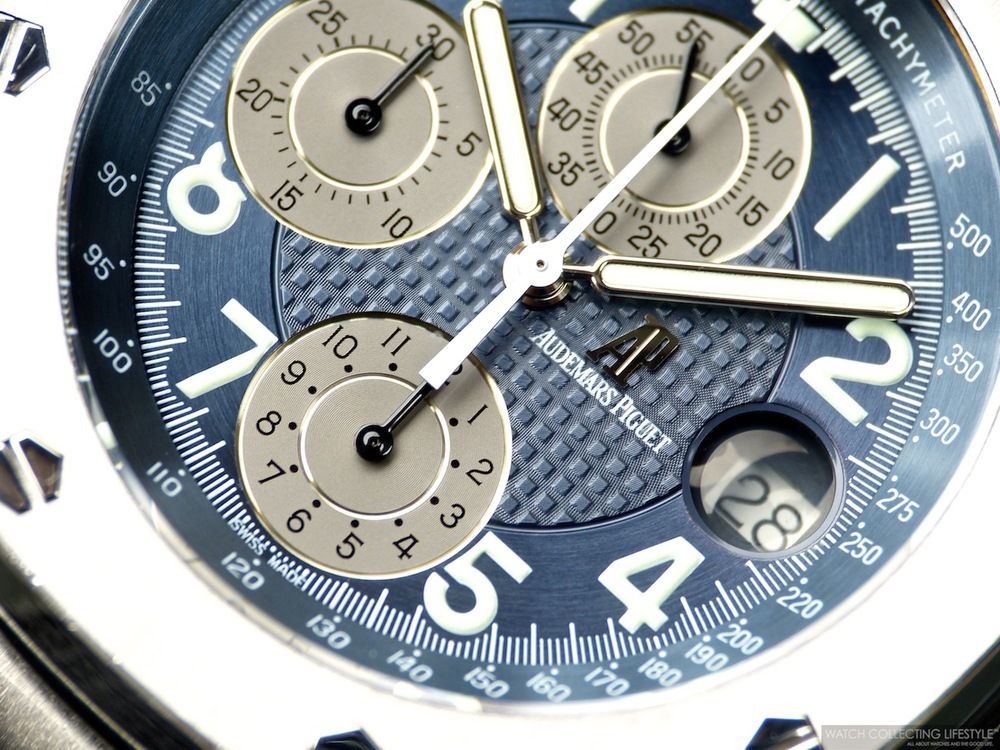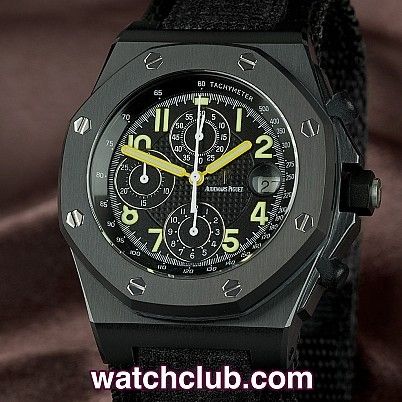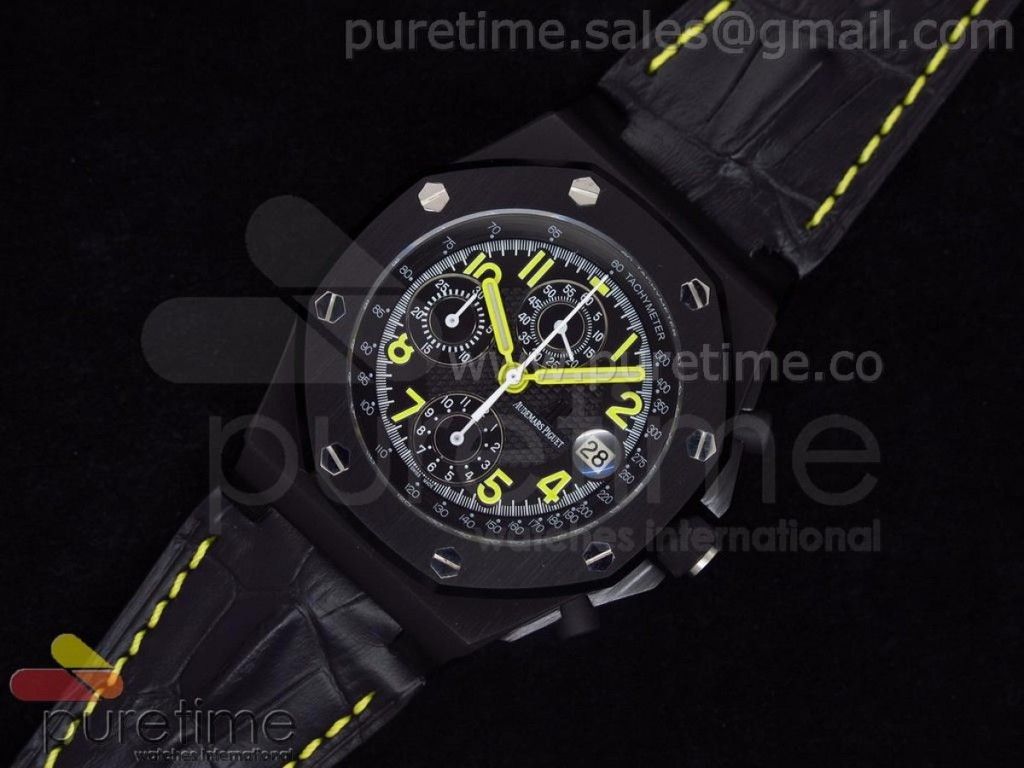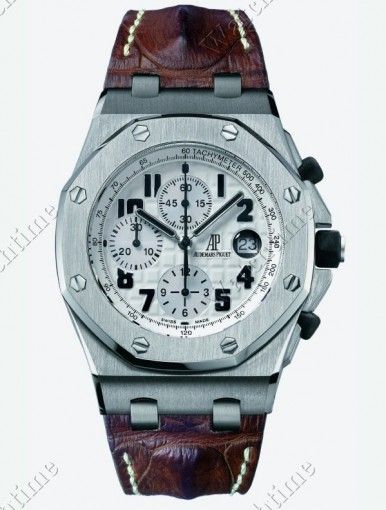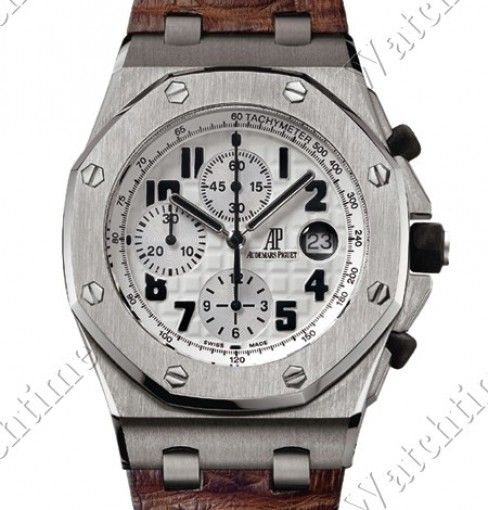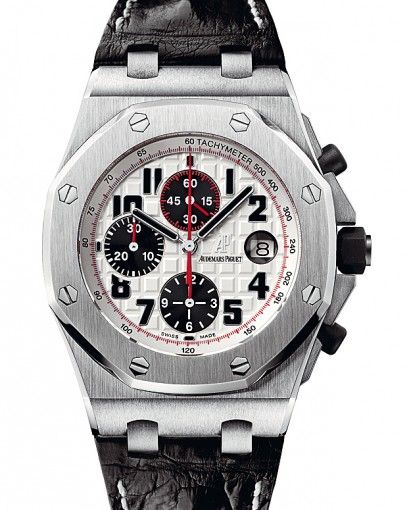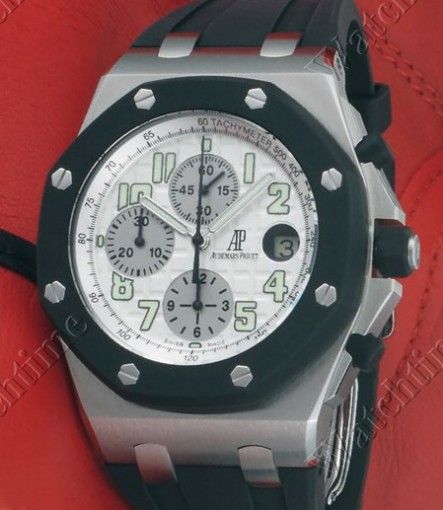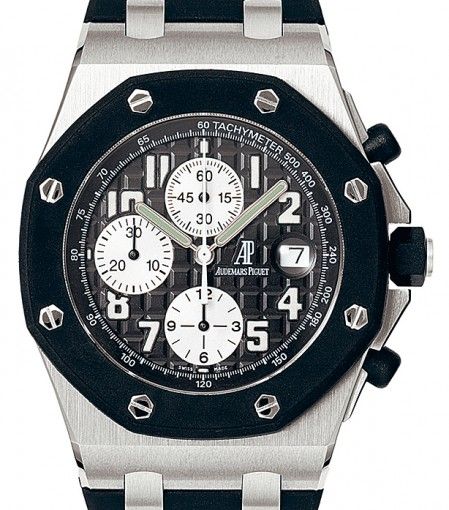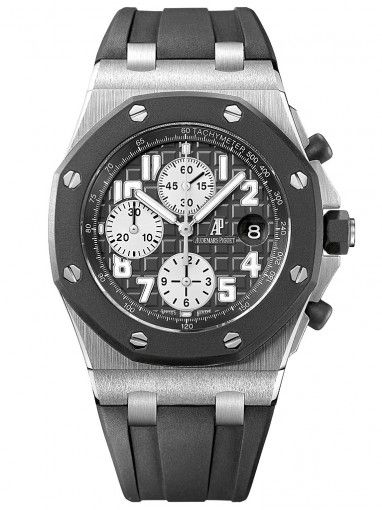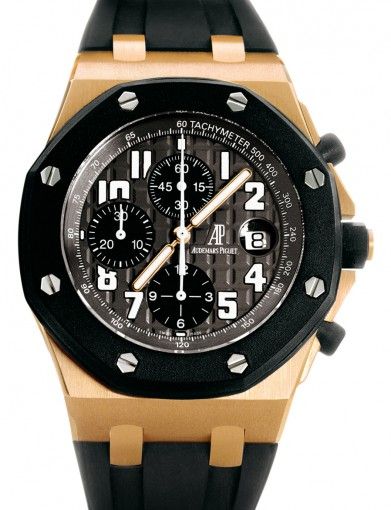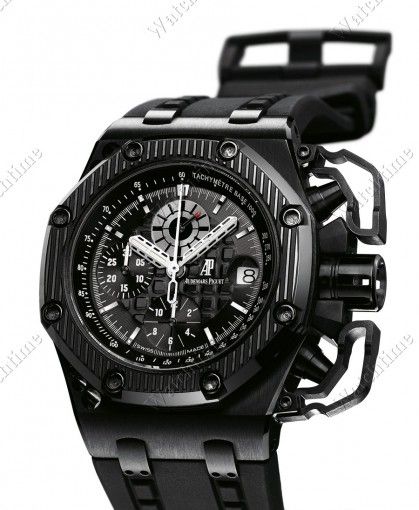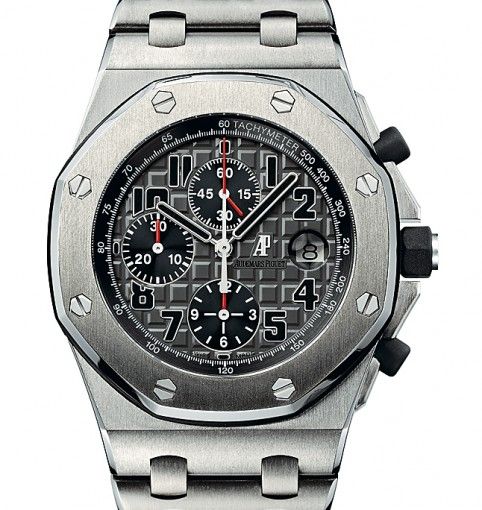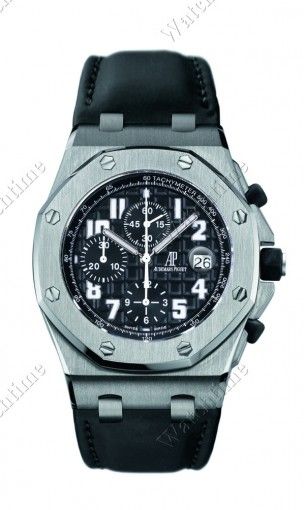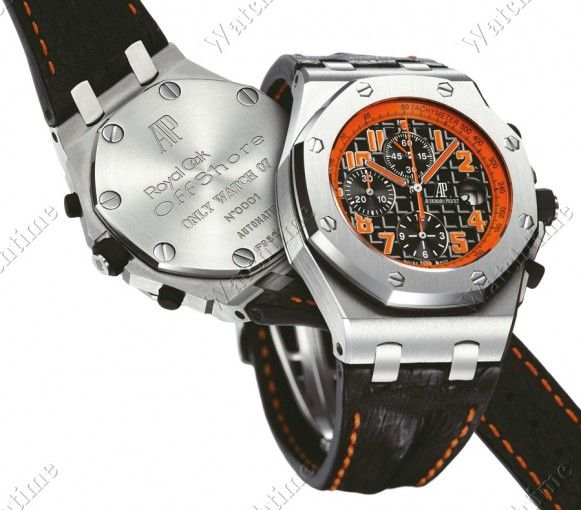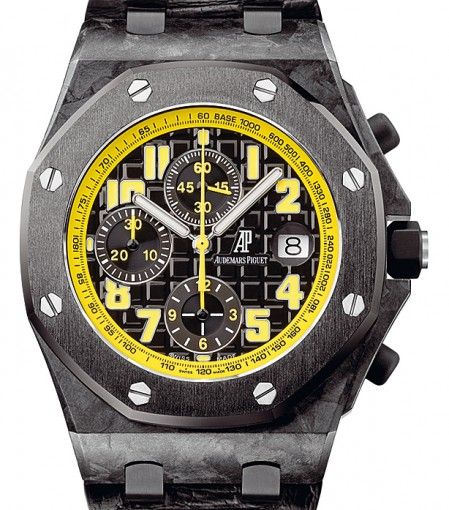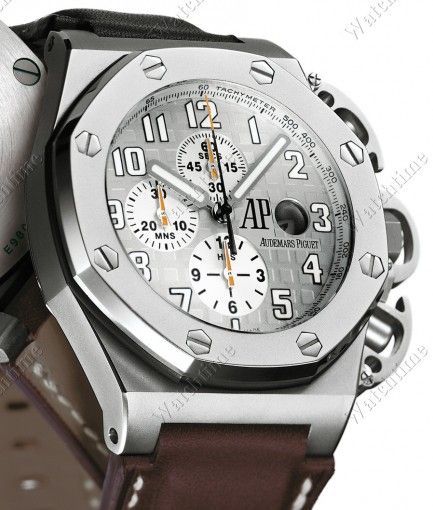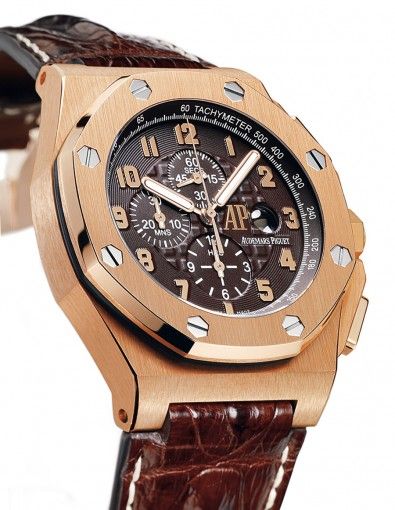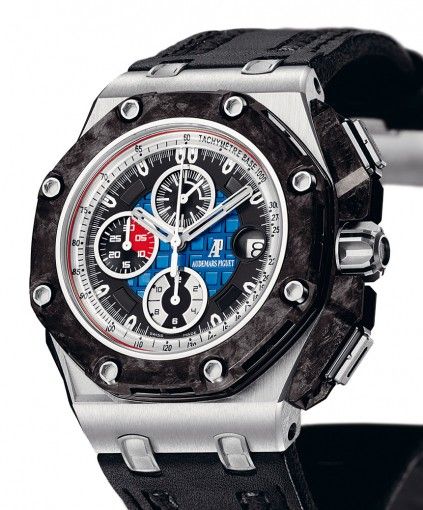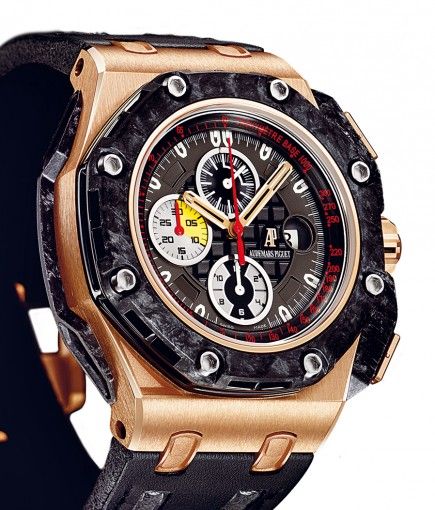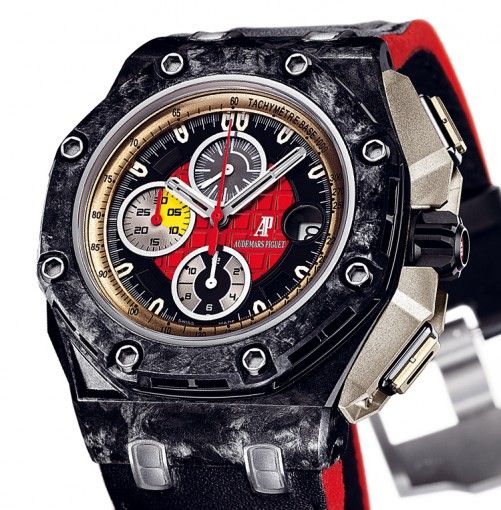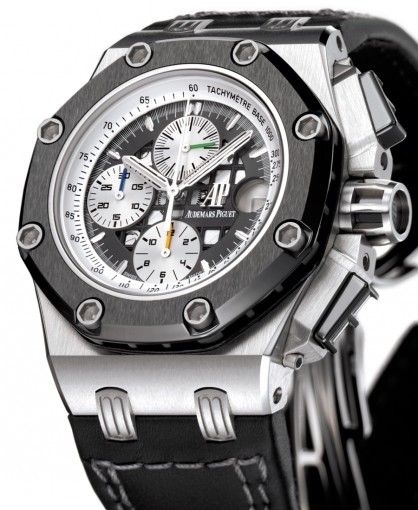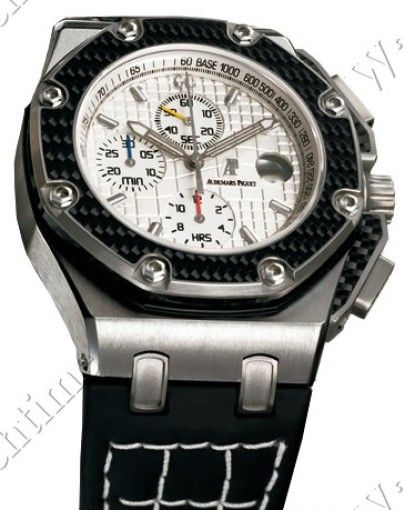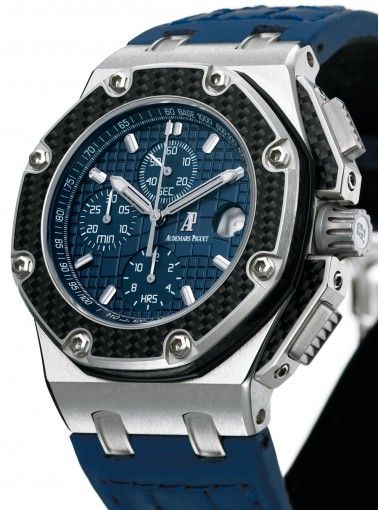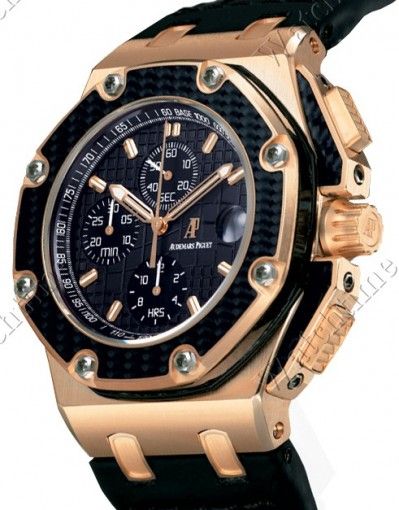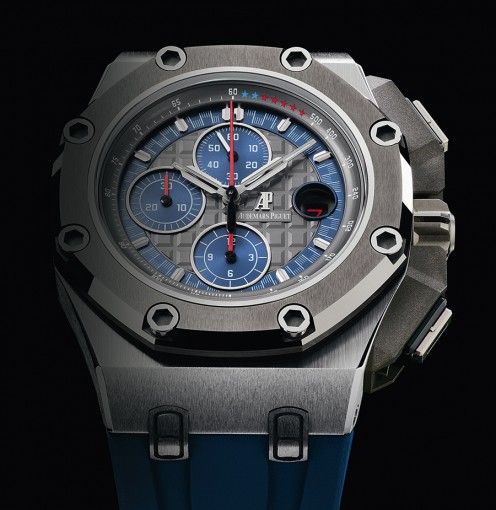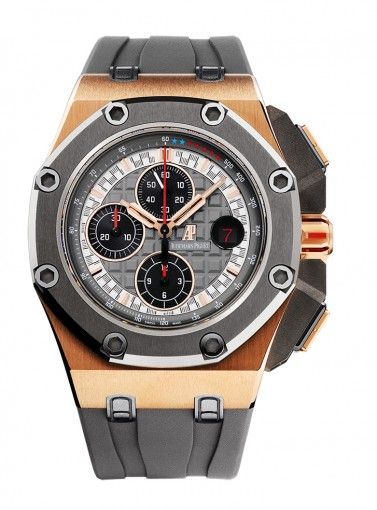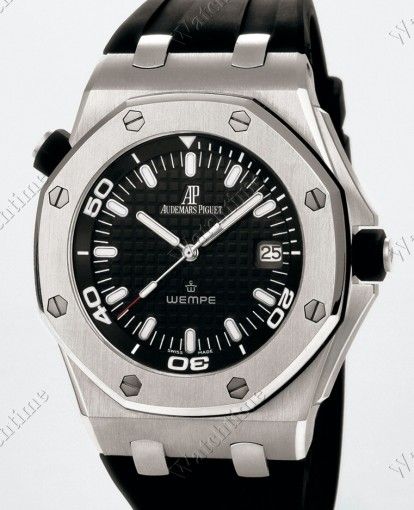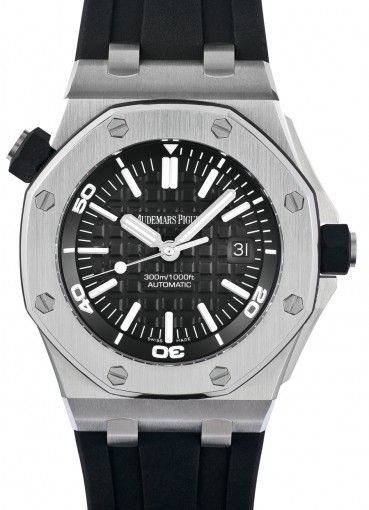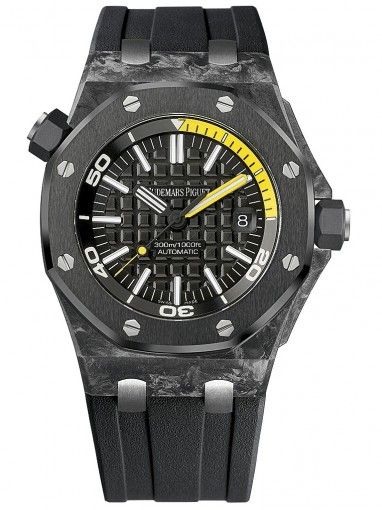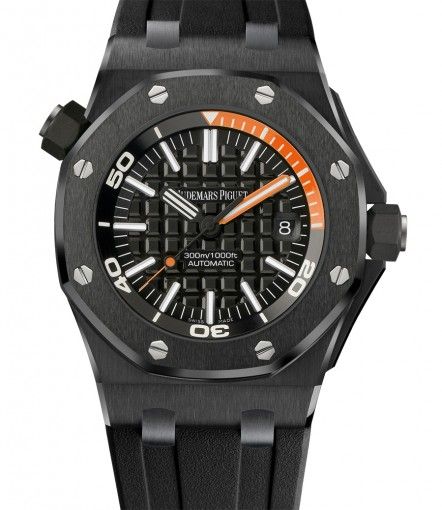- 27/1/13
- 9,280
- 1,892
- 113
PLEASE DON'T REPLY OR DISCUSS ABOUT THIS THREAD HERE !!!
Reference AP REVIEW-GUIDE
Replica Search, Identification, Evaluation & Selection
 INDEX
INDEX
Part I- AP BRIEF HISTORY
- AUDEMARS PIGUET TODAY
- ORIGIN OF AUDEMARS PIGUET
- SUCCESS OF AUDEMARS PIGUET
Part II- STAGES IN AP PRODUCTION, CASE TYPES, MOVEMENTS AND ENGRAVING OF AP WATCHES
1- STAGES IN AUDEMARS PIGUET PRODUCTION
1.1- Vintage models
1.2- Pre-Royal Oak models
1.3- Royal Oak Models
1.4- Royal Oak Offshore Models
1.5- Diver Models
1.6- Current Non-Royal Oak Models
2- AP CASE TYPES AND SHAPES
2.1- Royal Oak Case
2.2- Royal Oak Offshore Case, ver 1.0
2.3- Royal Oak Offshore Case, ver 2.0
3- AP MOVEMENTS
3.1- OEM AP Movements
3.2- Replica Movements for Royal Oak
3.3- Replica Movements for Royal Oak Offshore
3.4- Typical Problems of A7750 Sec@12 Movement
4- CASEBACK ENGRAVED INFORMATION OF AN AP WATCH.
Part III- REVIEW-GUIDE of AP Replicas–Search, Identification, Evaluation & Selection
5- REVIEW-GUIDE OF AP REPLICAS
5.1- INTRODUCTION
5.2- PRESENTATION AND ORGANIZATION OF WATCHES DATA
5.3- GUIDE Section A - with REVIEW and additional information
Audemars Piguet Replica Review-Guide arranged in chronological order of release of genuine AP model
5.4- GUIDE Section B
Audemars Piguet Replica Guide arranged by AP Types and Related watches
-Royal Oak 36mm (14790)
-Royal Oak 37mm (15450)
-Royal Oak 38-39 mm (15300)
-Royal Oak 41 mm (15400)
-Royal Oak Offshore 42mm
-Royal Oak Offshore 44mm
-Royal Oak Offshore 47mm
-Royal Oak Offshore Grand Prix
-Royal Oak Offshore Rubens Barrichello
-Royal Oak Offshore Montoya
-Royal Oak Offshore Schumacher
-Royal Oak Diver Wempe, Scuba
-Royal Oak Diver SS
-Royal Oak Diver Forged Carbon
-Royal Oak Diver Ceramic
-Royal Oak Diver Chronograph
6- OEM & AFTERMARKET STRAPS FOR AUDEMARS PIGUET WATCHES
6.1- Wrist perimeter and Deployants versus Buckles
6.2- AP OEM straps
6.3- AP Aftermarket straps
6.4- How to change the strap on an AP watch
7-FRANKENSTEIN AND GENSTEIN AP BUILDS
7.1 - Preliminary Requirements for Building an AP Franken
7.2 - Information about aftermarket gen-spec parts
7.3 - Highly Modified Models: Zorro GP, C&W GP, etc.
7.4 - Typical Modifications to Replicas
7.5 - Aftermarket Crystals, Datewheels, Cyclopses, Tachymeters
AKNOWLEDGEMENTS
*************************************************
CONTENT TO BE ADDED GRADUALLY
Part I- AP BRIEF HISTORY
- AUDEMARS PIGUET TODAY
Audemars Piguet (AP) (French pronunciation: [odma? pi??]) is a manufacturer of ultra-luxury Swiss watches founded in 1875 by watch makers Jules-Louis Audemars and Edward-Auguste Piguet. Audemars Piguet is often regarded to be among the highest end of watch manufacturers, sharing prestigious acclamation with Patek Philippe, Vacheron Constantin, A. Lange & Söhne , Jaeger-LeCoultre and Bregeut.
The Swiss company designs and manufactures high complex mechanical watches, haute joaillerie creations, and jewellery.
The Audemars Piguet watch group is composed of 1,200 employees, 14 distribution subsidiaries, and 16 boutiques worldwide. It comprises three production sites: Le Brassus, Le Locle and Meyrin in Switzerland. The brand is present in 88 countries.
Audemars Piguet has been a manufacture since 1875, making it one of the world's oldest watch manufacturers. The company is still owned by its founding families.
- ORIGIN OF AUDEMARS PIGUET
The roots of AP date back to 1875. Audemars Piguet was founded by Jules-Louis Audemars and Edward-Auguste Piguet in the village of Le Brassus in the Vallée de Joux, Switzerland. The 23-year-old Jules-Louis Audemars asked his childhood friend, Edward-Auguste Piguet, then only 21, to establish and produce watch movements. The two friends soon had great success with their customers. They appeared as the best at what they did.
From the beginning, Jules-Louis and Edward-Auguste showed an interest in complex mechanisms. Thanks to their watchmaking family heritage, they had developed all the skillsets necessary to create complex mechanisms. Even as a child, Jules Audemars used to craft control mechanisms for complicated watches.
When they joined forces, they decided to manufacture complicated movements for other luxury watchmaking companies such as Gubelin and Tiffany & Co. They realized they could craft and sell whole watches themselves as they had the necessary tools and expertise to start their own production.
Jules-Louis Audemars and Edward-Auguste Piguet split their work. Jules-Louis produced and assembled movements while Edward-Auguste ensured the completed movements were correctly regulated. Thus Jules-Louis started producing component parts for movements and Edward-Auguste became a finisher, one of the top jobs in the watchmaking industry. A finisher is a watchmaker who performs the final regulation of the timepiece and put the finishing touches to the escapements.
Later, the roles changed. Jules-Louis designed movements, created watches and dealt with technical responsibilities and managed the production and technical part of the business, while Edward-Auguste focused on sales and handled the financial side.
From the beginning, Jules-Louis and Edward-Auguste's watches were prized by admirers of fine mechanical timepieces for their high quality and the precision.
On 17 December 1881, Jules-Louis Audemars and Edward-Auguste Piguet officially founded "Audemars Piguet et Cie" in Le Brassus. In 1882, they presented their first complicated fob watches with perpetual calendars and minute repeater or chronograph.
Since 1882, members of the Audemars and Piguet families have been on the board of directors and have, therefore, always been involved directly or indirectly in the running of the company.
In 1889, AP opened its first branch in Geneva and rapidly began to grow and prosper. With its 70 workers, the manufacturer became one of the largest employers in the Vaud area.
In 1907, Audemars Piguet built a new factory to accommodate all of its employees. However, this favorable period ended with the onset of the First World War.
World War I created difficulties for all companies including AP.
Jules-Edward Audemars died in 1918 and Edward-Auguste Piguet died a year later in 1919. Despite the founders' deaths, AP continued its path in fine horology.
In 1918, Paul-Louis Audemars and Paul-Edward Piguet, the sons of the founders continued the business begun by their fathers and created ground-breaking watches such as the world's thinnest pocket watch caliber (1.32mm) and the first skeletonized pocket watch.
During the Roaring Twenties, Audemars Piguet launched jewelled ladies' watches and later in the Art Deco period, Audemars Piguet produced the first watch with a jumping hour display.
After the Wall Street crash of 1929, the company faced a major crisis. The crash of the stock market slowed the development of many Swiss companies. At one point, AP like other watchmakers was on the brink of collapse.
In 1933, Paul-Louis Audemars' son, Jacques-Louis Audemars took over the company and gave it a new impetus but the Great Depression jeopardized the development of Audemars Piguet. Only two employees remained in the company and only a few timepieces were made.
From 1936 to 1953, the chronographs' production had a new lease on life but the Second World War slowed down sales. After the war, AP production focused on innovative, ultra-thin watches and continued to create traditional high-end pieces.
In 1949, Audemars Piguet participated for the first time in the Basel Fair in Basel (Switzerland).
From 1954 to 1971, the company enjoyed an era of prosperity and innovations. Its products achieved great success among international clients.
In 1962, Georges Golay became AP's business manager. From 1966 to 1987, he served as managing director and CEO of the company.
In the 1970s, watch manufacturers faced financial troubles due to "the quartz crisis". The Swiss watchmaking industry registered dramatic drops in sales because of the quartz watches coming from Japan.
In 1971, Audemars Piguet realized that the company needed a revolutionary change and decided that it was time to introduce a timepiece that had never been seen before. After getting some feedback from the Italian market about the interest in steel luxury watches, Audemars Piguet created its most famous watch to date: the Royal Oak.
In April 1972, they participated in the annual European watch-making fair in Basel, Switzerland.
On the eve of the fair, AP's managing director, Georges Golay, called the designer Gérald Genta and told him that the Italian market was expecting an "unprecedented steel watch". Golay needed a special watch to present at the fair. In less than a day, Gérald Genta invented the Royal Oak, which became AP's masterpiece.
The Royal Oak was characterized by a revolutionary design. At the time, luxury watches on the market were all round, slim and in gold. Gérald Genta designed an avant gardist octagonal watch in steel with sharp angles and visible screws.
The Royal Oak was the first high-end sports watch made of steel, recognizable by its octagonal bezel with eight hexagonal screws, the guillochage on its dial, a textured blue "tapisserie" motif, its integrated bracelet and eight visible bolts on the back. The watch was slim (7mm) and had a case diameter of 39mm.
On 6 September 1651 Oliver Cromwell's troops pursued King Charles II, the future king of England, Scotland and Ireland. To escape them, he took refuge in the branches of an oak tree. The tree became the "Royal oak" and a symbol of power and protection.
In commemoration of this historical event, eight ships of the British Royal Navy took the name of HMS Royal Oak between 1664 and 1939. Gérald Genta took inspiration from one of them, built in 1862.
One battleship was reinforced with steel plates, had octagonal gun ports for its cannons that were secured by eight visible bolts. These features served as a basis to imagine and create the shape of the watch case.
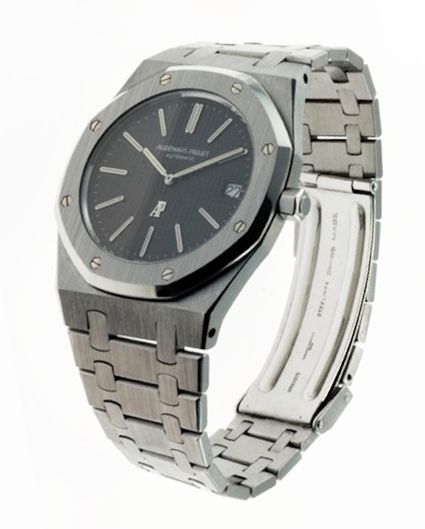
The watch design and its steel case revolutionized the watch industry.
When the Royal Oak was released in 1973, the idea of making a high-end sports watch in stainless steel was considered a high risk. The Royal Oak was futuristic.
Its price and original design disconcerted the market. Therefore, its launch was slow at the beginning. But collectors and trend setters began adopting the watch and the Royal Oak became a huge international success.
The first series of 2000 Royal Oak (called the A-series) took more than a year to sell. These watches are still the most sought after by collectors. They recognize them by the AP initials placed above 6 o'clock rather than at 12 o'clock like successive series.
At the beginning, AP made a limited edition of 1,000. In 2000, the brand finally sold 100,000 Royal Oak. The watch represents around 45% of the global sales.
The first Royal Oak featuring a perpetual calendar caliber 2120/2800 was designed in 1981 in order to be the world's thinnest timepiece. The Royal Oak Day Date Moonphase was then launched. In 1983, the Royal Oak was equipped with lunar phases and a lunar calendar. One year later, the watch had a perpetual calendar. In 2004, Audemars Piguet created the Royal Oak hand-wound tourbillon chronograph, a limited edition of 20 pieces. This watch had a double ten-day power reserve indication and a 30-minute counter. Its case and its bracelet were made of platinum.
Over the years, Audemars Piguet has introduced many variations of the Royal Oak but the most successful is the Royal Oak Offshore, an extreme sport version of the Royal Oak, created in 1992 to celebrate the Royal Oak's 20th anniversary. It was designed by 22-year-old Emmanuel Gueit.
With its 42mm case, the Royal Oak Offshore was the world's first oversized watch. This new watch was bold and futuristic. It had an oversized 42mm wide case (a normal size today but which shocked at the time) and featured a 300m water resistance and rugged materials such as carbon and rubber.

The timepiece was named "The Beast". Sports stars and hip hop artists wore the Royal Oak Offshore and it became an instant hit.
In 1999, AP paired with actor Arnold Schwarzenegger for the End of Days. In 2003, the company continued the partnership. In the movie Terminator 3, the actor wore the Royal Oak Offshore T3 chronograph.
In 2009, AP launched the Royal Oak Offshore self-winding chronograph rose gold, that featured a black dial, a date display at 3 o'clock and a black rubber bezel.
In 2013, AP presented the Royal Oak Offshore Grande Complication.
- SUCCESS OF AUDEMARS PIGUET
The company opened its first branch in Geneva in 1889, and began creating its own components and assembling in its factory with direct supervision and strict quality control.
Between 1894 and 1899, the company produced about 1,200 timepieces. After the deaths of Audemars and Piguet, in 1918 and 1919 respectively, the company continued to grow and became more well-known. As the company's business rose, Tiffany & Co, Cartier and Bulgari became customers, who rebranded and sold AP watches under their own brand names. Today, these watches are only identifiable as Audemars Piguet products by their serial numbers.
Audemars Piguet opened a store in New York City in 2003 and in Miami in 2006.
In 2006, the Swiss company launched the Changing Times Award for the best European entrepreneurs in the field of high technology. Two years later, over 140 companies submitted their candidacy to the selection committee, composed of Europe's leading venture companies.
Audemars Piguet currently sells its timepieces in Europe, Asia, North America, Middle East, Africa and Oceania. The brand is present in 88 countries.
Part II- STAGES IN AP PRODUCTION, CASE TYPES, MOVEMENTS AND ENGRAVING OF AP WATCHES
1- STAGES IN AUDEMARS PIGUET PRODUCTION
1.1- Vintage models
1.2- Pre-Royal Oak models
1.3- Royal Oak Models
Inspired by a traditional diver’s helmet, this revolutionary steel watch was characterized by an octagonal shaped bezel secured by eight visible hexagonal gold screws, visible water resistance gasket and a dial adorned with exclusive blue petit tapisserie motif.
The watch was slim, just 7 mm, but pretty large (at that time) having a case diameter of 39 mm. To complete the watch, an integrated - and very complex to build - stainless steel bracelet.


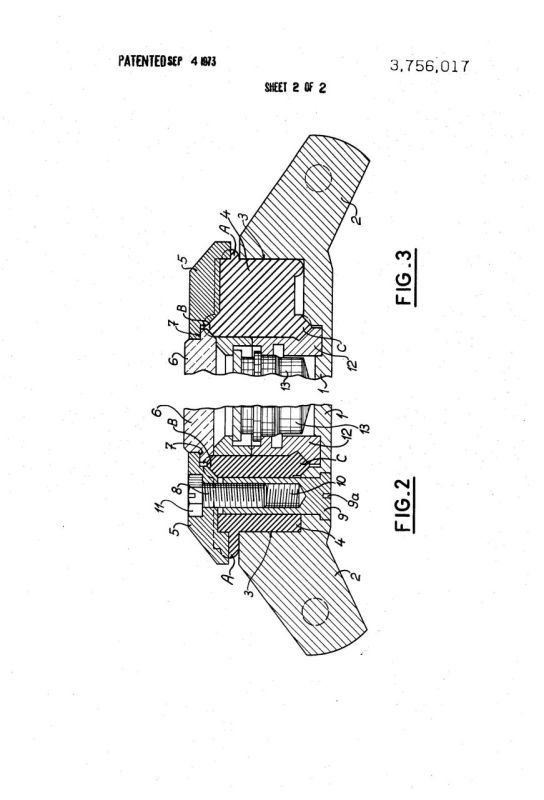
Curiously, the first prototypes were fabricated in white gold as machining pieces of high-grade steel to Genta’s specifications was very difficult and expensive at the time and could not be justified for the initial prototypes.
The movement of choice was the beautifully finished self-winding Calibre 2121, which is still used today for the Royal Oak Jumbo ref.15202. The Calibre 2121 was based on the Audemars Piguet Calibre 2120 with the integration of a date complication.
It is interesting to mention that the Calibre 2120 was introduced in 1967 as the result of a project led by Jaeger-LeCoultre, with the technical contribution of Audemars Piguet and the funding of Audemars Piguet, Patek Philippe and Vacheron Constantin, for the creation of an ultra-thin automatic movement. The joint effort produced the Jaeger-LeCoultre Calibre 920, a highly innovative and reliable movement, that each of the three funding customers renamed and customized (the Patek Philippe 28-255 C was used for the Nautilus while the Vacheron Constantin 1120 powered the 222 model).
The overall height of the Calibre 2121, beating at 19,800 vibrations per hour, was a mere 3.05 mm. Thanks to the anti-shock system, the movement was suitable for being used in a sport watch like the Royal Oak.
Considering that the design theme was inspired by a diver's brass helmet, as Genta confirmed, the name itself had to be nautical-related. Audemars Piguet chose Royal Oak which came from the name of a series of eight vessels (remember that the bezel is octagonal) of Britain's Royal Navy which in turn took their name from the ancient hollowed oak tree within which the King Charles II of England hid to escape the Roundheads - the supporters of the Parliament during the English Civil War - following the Battle of Worcester in 1651.
In 1972, at the Basel fair, the Royal Oak was finally ready for the launch.
Introduced at the price of 3300 Swiss Francs, this never-seen-before steel timepiece was more expensive than a gold Patek Philippe dress watch and more than ten times the cost of a Rolex Submariner. The message was certainly bold: haute horlogerie could come up with prestigious timepieces without necessarily relying on precious metals. From this point forward, it was the design, the precision of the execution, and the quality of the movement that counted.
But there was no immediate take-off for this line. The Royal Oak was the target of fierce initial criticism. Disruptive design, visible gasket and screws, integrated bracelet, exorbitant price tag: there was were enough for many detractors to say that Audemars Piguet was going to be bankrupt in few months.
However, the allure and the quality of the Royal Oak could not be negated for long. Collectors and trend setters started adopting the watch which, with its decidedly different design, won over a discerning and informed audience becoming a huge success for Audemars Piguet and the symbol of the manufacturer of Le Brassus.
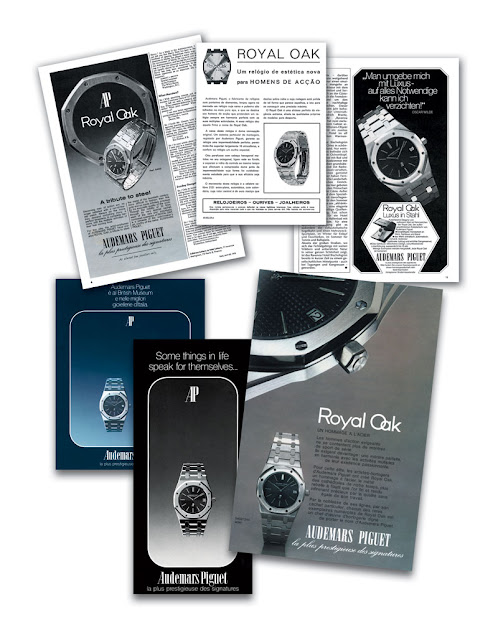

Audemars Piguet built a first series of 1000 pieces which is known by collectors as the A-series of reference 5402. It took more than one year for Audemars Piguet to sell all the first 1000 Royal Oaks but then sales finally took off. After the first A-series, Audemars Piguet still used A serial numbers for other 1000 pieces, then passed to B and C serial numbers.
This first Royal Oak A-series is still the most sought after by collectors and it is easy to recognize for the AP initials placed above 6 o'clock rather than at 12 o'clock like successive series.
Over the following years, Audemars Piguet introduced many variations of the original Royal Oak adopting precious metals, leather and rubber straps as well as new technical solutions and complications.
1.4- Royal Oak Offshore Models
The road towards development of any new timepiece can be a tumultuous journey, often met with doubt, second-guessing, technical challenges and fear of the unknown commercial and critical reception that the new model will ultimately receive. In many ways, the development history of the Royal Oak Offshore between 1989 and 1993 mirrors many aspects of the history of its primary source and inspiration – the 1972 Royal Oak. The original Royal Oak, designed by Gerald Genta in the early years of the Quartz Crisis, shattered the boundaries between luxury and sports watches, while challenging all conventions pertaining to the manufacturing and finishing of stainless steel timepieces. The large and meticulously crafted timepiece developed into an icon in the eyes and minds of collectors and enthusiasts, and boldly stands the test of time over four decades since its creation. However, as we all know very well, its path towards success was met with as much doubt and resistance as it was met with acclaim and appreciation.
The genesis of the Royal Oak Offshore begins in 1989 when a talented, young, second generation designer working for Audemars Piguet named Emmanuel Gueit introduced a sketch of a concept that re-imagined the Royal Oak into a more massive, substantial watch that can handle all of the elements and forces of nature that it would encounter on the wrists of the most active and adventure-seeking collectors. Gueit’s conceptual sketches did not receive much fanfare internally. In fact, like several other designs that ultimately found success, the early years of development were a lonely journey. Fortunately, the project was supported by the Joint Chairman of Audemars Piguet at the time. In addition to the support he provided Gueit, he was also the man that ultimately designated the name of the new creation as the Royal Oak Offshore.
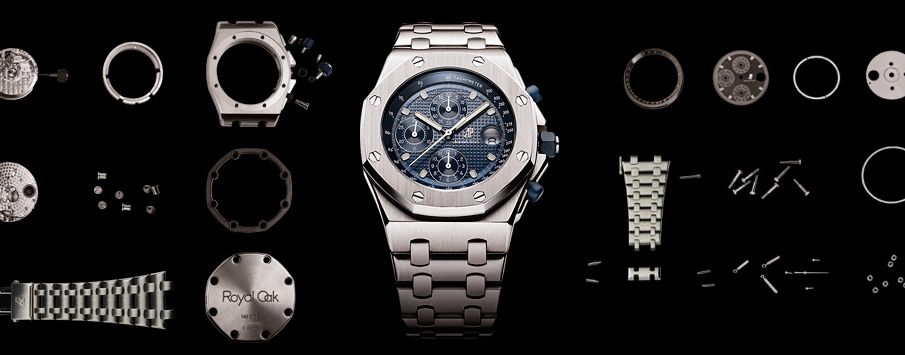
While Genta’s original Royal Oak was the definitive source of reference and inspiration for the Royal Oak Offshore, the new design diverged from the original in several significant ways that came to be the defining characteristics of the Royal Oak Offshore. The most pronounced shift was the dramatic case size of 42 mm. While this is standard fare in 2014, it was a shock when introduced in 1993 at BaselWorld. By this time, the watch had already been nicknamed, ‘The Beast’ due to its staggering proportions. In addition to its large size and inclusion of the chronograph complication, several other features jumped out that distinguished the Royal Oak Offshore: the curved links of the bracelet, the massive visible black gasket on the bezel, the silicon caps of the chronograph pushers and crown, the stylized crown protection, and the fact that the movement was able to be placed inside an anti-magnetic cover due to the unprecedented case size.
It is well documented that the initial 100 examples of the Royal Oak Offshore were not engraved with the Royal Oak Offshore designation on the case back as the new model was considered very risky. Only Royal Oak is engraved on this first batch. There are other features that differentiate the earliest examples of Royal Oak Offshore: the first batch had a folding clasp that was soon replaced by an open structure clasp. Furthermore, the extra links on these early examples were secured by four screws, which was later adapted for better functionality. In addition, early examples were sold with distinct octagonal presentation boxes that feature a circular port window on top of the box to view the watch.
The present example, which is part of the permanent collection of the Audemars Piguet Museum, is No. 32 of the first 100 examples produced. As part of this exclusive group, the word Offshore is not engraved on the case back of the watch. The color scheme of these early examples share the same codes as the original 1972 Royal Oak, however keen observers will note that the tapisserie finish on the dial is slightly larger. Collectors of early examples of the Offshore seek to own one of the first 100 that features all of the original characteristics of these celebrated rarities.
Over 20 years have passed since its introduction, and now the ‘Beast’ is truly unleashed. The Royal Oak Offshore line has been one of Audemars Piguet’s primary platforms for innovative case materials and daring design choices as exhibited through the 118 variations of the 42 mm that have been created over the last two decades. It has evolved into an icon in its own right and a symbol of the fusion of luxury and sports aesthetics that challenged all industry standards and expectations when it was introduced in 1993. Like several Audemars Piguet innovations and developments that came prior and since, the Royal Oak Offshore established new benchmarks and ushered in new trends. The Royal Oak Offshore will continue to energize collectors and enthusiasts while generating healthy controversy and debate for the next twenty years and beyond.
Detailing of hand stack on genuine Royal Oak Offshore:
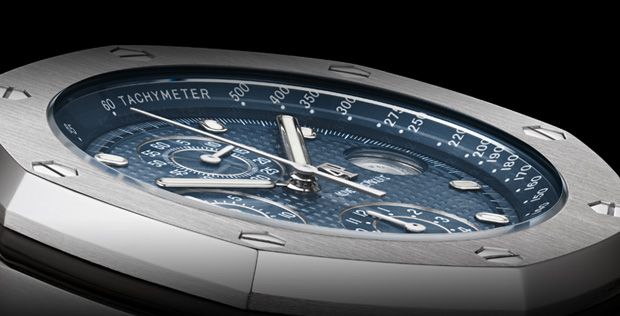
...
...
Reference AP REVIEW-GUIDE
Replica Search, Identification, Evaluation & Selection

Part I- AP BRIEF HISTORY
- AUDEMARS PIGUET TODAY
- ORIGIN OF AUDEMARS PIGUET
- SUCCESS OF AUDEMARS PIGUET
Part II- STAGES IN AP PRODUCTION, CASE TYPES, MOVEMENTS AND ENGRAVING OF AP WATCHES
1- STAGES IN AUDEMARS PIGUET PRODUCTION
1.1- Vintage models
1.2- Pre-Royal Oak models
1.3- Royal Oak Models
1.4- Royal Oak Offshore Models
1.5- Diver Models
1.6- Current Non-Royal Oak Models
2- AP CASE TYPES AND SHAPES
2.1- Royal Oak Case
2.2- Royal Oak Offshore Case, ver 1.0
2.3- Royal Oak Offshore Case, ver 2.0
3- AP MOVEMENTS
3.1- OEM AP Movements
3.2- Replica Movements for Royal Oak
3.3- Replica Movements for Royal Oak Offshore
3.4- Typical Problems of A7750 Sec@12 Movement
4- CASEBACK ENGRAVED INFORMATION OF AN AP WATCH.
Part III- REVIEW-GUIDE of AP Replicas–Search, Identification, Evaluation & Selection
5- REVIEW-GUIDE OF AP REPLICAS
5.1- INTRODUCTION
5.2- PRESENTATION AND ORGANIZATION OF WATCHES DATA
5.3- GUIDE Section A - with REVIEW and additional information
Audemars Piguet Replica Review-Guide arranged in chronological order of release of genuine AP model
5.4- GUIDE Section B
Audemars Piguet Replica Guide arranged by AP Types and Related watches
-Royal Oak 36mm (14790)
-Royal Oak 37mm (15450)
-Royal Oak 38-39 mm (15300)
-Royal Oak 41 mm (15400)
-Royal Oak Offshore 42mm
-Royal Oak Offshore 44mm
-Royal Oak Offshore 47mm
-Royal Oak Offshore Grand Prix
-Royal Oak Offshore Rubens Barrichello
-Royal Oak Offshore Montoya
-Royal Oak Offshore Schumacher
-Royal Oak Diver Wempe, Scuba
-Royal Oak Diver SS
-Royal Oak Diver Forged Carbon
-Royal Oak Diver Ceramic
-Royal Oak Diver Chronograph
6- OEM & AFTERMARKET STRAPS FOR AUDEMARS PIGUET WATCHES
6.1- Wrist perimeter and Deployants versus Buckles
6.2- AP OEM straps
6.3- AP Aftermarket straps
6.4- How to change the strap on an AP watch
7-FRANKENSTEIN AND GENSTEIN AP BUILDS
7.1 - Preliminary Requirements for Building an AP Franken
7.2 - Information about aftermarket gen-spec parts
7.3 - Highly Modified Models: Zorro GP, C&W GP, etc.
7.4 - Typical Modifications to Replicas
7.5 - Aftermarket Crystals, Datewheels, Cyclopses, Tachymeters
AKNOWLEDGEMENTS
*************************************************
CONTENT TO BE ADDED GRADUALLY
Part I- AP BRIEF HISTORY
- AUDEMARS PIGUET TODAY
Audemars Piguet (AP) (French pronunciation: [odma? pi??]) is a manufacturer of ultra-luxury Swiss watches founded in 1875 by watch makers Jules-Louis Audemars and Edward-Auguste Piguet. Audemars Piguet is often regarded to be among the highest end of watch manufacturers, sharing prestigious acclamation with Patek Philippe, Vacheron Constantin, A. Lange & Söhne , Jaeger-LeCoultre and Bregeut.
The Swiss company designs and manufactures high complex mechanical watches, haute joaillerie creations, and jewellery.
The Audemars Piguet watch group is composed of 1,200 employees, 14 distribution subsidiaries, and 16 boutiques worldwide. It comprises three production sites: Le Brassus, Le Locle and Meyrin in Switzerland. The brand is present in 88 countries.
Audemars Piguet has been a manufacture since 1875, making it one of the world's oldest watch manufacturers. The company is still owned by its founding families.
- ORIGIN OF AUDEMARS PIGUET
The roots of AP date back to 1875. Audemars Piguet was founded by Jules-Louis Audemars and Edward-Auguste Piguet in the village of Le Brassus in the Vallée de Joux, Switzerland. The 23-year-old Jules-Louis Audemars asked his childhood friend, Edward-Auguste Piguet, then only 21, to establish and produce watch movements. The two friends soon had great success with their customers. They appeared as the best at what they did.
From the beginning, Jules-Louis and Edward-Auguste showed an interest in complex mechanisms. Thanks to their watchmaking family heritage, they had developed all the skillsets necessary to create complex mechanisms. Even as a child, Jules Audemars used to craft control mechanisms for complicated watches.
When they joined forces, they decided to manufacture complicated movements for other luxury watchmaking companies such as Gubelin and Tiffany & Co. They realized they could craft and sell whole watches themselves as they had the necessary tools and expertise to start their own production.
Jules-Louis Audemars and Edward-Auguste Piguet split their work. Jules-Louis produced and assembled movements while Edward-Auguste ensured the completed movements were correctly regulated. Thus Jules-Louis started producing component parts for movements and Edward-Auguste became a finisher, one of the top jobs in the watchmaking industry. A finisher is a watchmaker who performs the final regulation of the timepiece and put the finishing touches to the escapements.
Later, the roles changed. Jules-Louis designed movements, created watches and dealt with technical responsibilities and managed the production and technical part of the business, while Edward-Auguste focused on sales and handled the financial side.
From the beginning, Jules-Louis and Edward-Auguste's watches were prized by admirers of fine mechanical timepieces for their high quality and the precision.
On 17 December 1881, Jules-Louis Audemars and Edward-Auguste Piguet officially founded "Audemars Piguet et Cie" in Le Brassus. In 1882, they presented their first complicated fob watches with perpetual calendars and minute repeater or chronograph.
Since 1882, members of the Audemars and Piguet families have been on the board of directors and have, therefore, always been involved directly or indirectly in the running of the company.
In 1889, AP opened its first branch in Geneva and rapidly began to grow and prosper. With its 70 workers, the manufacturer became one of the largest employers in the Vaud area.
In 1907, Audemars Piguet built a new factory to accommodate all of its employees. However, this favorable period ended with the onset of the First World War.
World War I created difficulties for all companies including AP.
Jules-Edward Audemars died in 1918 and Edward-Auguste Piguet died a year later in 1919. Despite the founders' deaths, AP continued its path in fine horology.
In 1918, Paul-Louis Audemars and Paul-Edward Piguet, the sons of the founders continued the business begun by their fathers and created ground-breaking watches such as the world's thinnest pocket watch caliber (1.32mm) and the first skeletonized pocket watch.
During the Roaring Twenties, Audemars Piguet launched jewelled ladies' watches and later in the Art Deco period, Audemars Piguet produced the first watch with a jumping hour display.
After the Wall Street crash of 1929, the company faced a major crisis. The crash of the stock market slowed the development of many Swiss companies. At one point, AP like other watchmakers was on the brink of collapse.
In 1933, Paul-Louis Audemars' son, Jacques-Louis Audemars took over the company and gave it a new impetus but the Great Depression jeopardized the development of Audemars Piguet. Only two employees remained in the company and only a few timepieces were made.
From 1936 to 1953, the chronographs' production had a new lease on life but the Second World War slowed down sales. After the war, AP production focused on innovative, ultra-thin watches and continued to create traditional high-end pieces.
In 1949, Audemars Piguet participated for the first time in the Basel Fair in Basel (Switzerland).
From 1954 to 1971, the company enjoyed an era of prosperity and innovations. Its products achieved great success among international clients.
In 1962, Georges Golay became AP's business manager. From 1966 to 1987, he served as managing director and CEO of the company.
In the 1970s, watch manufacturers faced financial troubles due to "the quartz crisis". The Swiss watchmaking industry registered dramatic drops in sales because of the quartz watches coming from Japan.
In 1971, Audemars Piguet realized that the company needed a revolutionary change and decided that it was time to introduce a timepiece that had never been seen before. After getting some feedback from the Italian market about the interest in steel luxury watches, Audemars Piguet created its most famous watch to date: the Royal Oak.
In April 1972, they participated in the annual European watch-making fair in Basel, Switzerland.
On the eve of the fair, AP's managing director, Georges Golay, called the designer Gérald Genta and told him that the Italian market was expecting an "unprecedented steel watch". Golay needed a special watch to present at the fair. In less than a day, Gérald Genta invented the Royal Oak, which became AP's masterpiece.
The Royal Oak was characterized by a revolutionary design. At the time, luxury watches on the market were all round, slim and in gold. Gérald Genta designed an avant gardist octagonal watch in steel with sharp angles and visible screws.
The Royal Oak was the first high-end sports watch made of steel, recognizable by its octagonal bezel with eight hexagonal screws, the guillochage on its dial, a textured blue "tapisserie" motif, its integrated bracelet and eight visible bolts on the back. The watch was slim (7mm) and had a case diameter of 39mm.
On 6 September 1651 Oliver Cromwell's troops pursued King Charles II, the future king of England, Scotland and Ireland. To escape them, he took refuge in the branches of an oak tree. The tree became the "Royal oak" and a symbol of power and protection.
In commemoration of this historical event, eight ships of the British Royal Navy took the name of HMS Royal Oak between 1664 and 1939. Gérald Genta took inspiration from one of them, built in 1862.
One battleship was reinforced with steel plates, had octagonal gun ports for its cannons that were secured by eight visible bolts. These features served as a basis to imagine and create the shape of the watch case.

The watch design and its steel case revolutionized the watch industry.
When the Royal Oak was released in 1973, the idea of making a high-end sports watch in stainless steel was considered a high risk. The Royal Oak was futuristic.
Its price and original design disconcerted the market. Therefore, its launch was slow at the beginning. But collectors and trend setters began adopting the watch and the Royal Oak became a huge international success.
The first series of 2000 Royal Oak (called the A-series) took more than a year to sell. These watches are still the most sought after by collectors. They recognize them by the AP initials placed above 6 o'clock rather than at 12 o'clock like successive series.
At the beginning, AP made a limited edition of 1,000. In 2000, the brand finally sold 100,000 Royal Oak. The watch represents around 45% of the global sales.
The first Royal Oak featuring a perpetual calendar caliber 2120/2800 was designed in 1981 in order to be the world's thinnest timepiece. The Royal Oak Day Date Moonphase was then launched. In 1983, the Royal Oak was equipped with lunar phases and a lunar calendar. One year later, the watch had a perpetual calendar. In 2004, Audemars Piguet created the Royal Oak hand-wound tourbillon chronograph, a limited edition of 20 pieces. This watch had a double ten-day power reserve indication and a 30-minute counter. Its case and its bracelet were made of platinum.
Over the years, Audemars Piguet has introduced many variations of the Royal Oak but the most successful is the Royal Oak Offshore, an extreme sport version of the Royal Oak, created in 1992 to celebrate the Royal Oak's 20th anniversary. It was designed by 22-year-old Emmanuel Gueit.
With its 42mm case, the Royal Oak Offshore was the world's first oversized watch. This new watch was bold and futuristic. It had an oversized 42mm wide case (a normal size today but which shocked at the time) and featured a 300m water resistance and rugged materials such as carbon and rubber.

The timepiece was named "The Beast". Sports stars and hip hop artists wore the Royal Oak Offshore and it became an instant hit.
In 1999, AP paired with actor Arnold Schwarzenegger for the End of Days. In 2003, the company continued the partnership. In the movie Terminator 3, the actor wore the Royal Oak Offshore T3 chronograph.
In 2009, AP launched the Royal Oak Offshore self-winding chronograph rose gold, that featured a black dial, a date display at 3 o'clock and a black rubber bezel.
In 2013, AP presented the Royal Oak Offshore Grande Complication.
- SUCCESS OF AUDEMARS PIGUET
The company opened its first branch in Geneva in 1889, and began creating its own components and assembling in its factory with direct supervision and strict quality control.
Between 1894 and 1899, the company produced about 1,200 timepieces. After the deaths of Audemars and Piguet, in 1918 and 1919 respectively, the company continued to grow and became more well-known. As the company's business rose, Tiffany & Co, Cartier and Bulgari became customers, who rebranded and sold AP watches under their own brand names. Today, these watches are only identifiable as Audemars Piguet products by their serial numbers.
Audemars Piguet opened a store in New York City in 2003 and in Miami in 2006.
In 2006, the Swiss company launched the Changing Times Award for the best European entrepreneurs in the field of high technology. Two years later, over 140 companies submitted their candidacy to the selection committee, composed of Europe's leading venture companies.
Audemars Piguet currently sells its timepieces in Europe, Asia, North America, Middle East, Africa and Oceania. The brand is present in 88 countries.
Part II- STAGES IN AP PRODUCTION, CASE TYPES, MOVEMENTS AND ENGRAVING OF AP WATCHES
1- STAGES IN AUDEMARS PIGUET PRODUCTION
1.1- Vintage models
1.2- Pre-Royal Oak models
1.3- Royal Oak Models

|
| The original Royal Oak sketch made by Gerald Genta |
Inspired by a traditional diver’s helmet, this revolutionary steel watch was characterized by an octagonal shaped bezel secured by eight visible hexagonal gold screws, visible water resistance gasket and a dial adorned with exclusive blue petit tapisserie motif.
The watch was slim, just 7 mm, but pretty large (at that time) having a case diameter of 39 mm. To complete the watch, an integrated - and very complex to build - stainless steel bracelet.



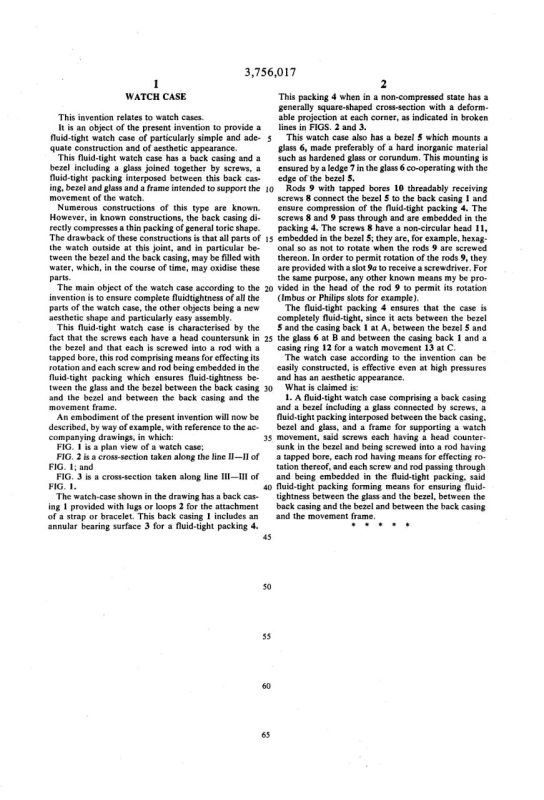
|
| The U.S. Patent 3.756.017 filed by Gerald Genta |
The movement of choice was the beautifully finished self-winding Calibre 2121, which is still used today for the Royal Oak Jumbo ref.15202. The Calibre 2121 was based on the Audemars Piguet Calibre 2120 with the integration of a date complication.

|
It is interesting to mention that the Calibre 2120 was introduced in 1967 as the result of a project led by Jaeger-LeCoultre, with the technical contribution of Audemars Piguet and the funding of Audemars Piguet, Patek Philippe and Vacheron Constantin, for the creation of an ultra-thin automatic movement. The joint effort produced the Jaeger-LeCoultre Calibre 920, a highly innovative and reliable movement, that each of the three funding customers renamed and customized (the Patek Philippe 28-255 C was used for the Nautilus while the Vacheron Constantin 1120 powered the 222 model).
The overall height of the Calibre 2121, beating at 19,800 vibrations per hour, was a mere 3.05 mm. Thanks to the anti-shock system, the movement was suitable for being used in a sport watch like the Royal Oak.
Considering that the design theme was inspired by a diver's brass helmet, as Genta confirmed, the name itself had to be nautical-related. Audemars Piguet chose Royal Oak which came from the name of a series of eight vessels (remember that the bezel is octagonal) of Britain's Royal Navy which in turn took their name from the ancient hollowed oak tree within which the King Charles II of England hid to escape the Roundheads - the supporters of the Parliament during the English Civil War - following the Battle of Worcester in 1651.
In 1972, at the Basel fair, the Royal Oak was finally ready for the launch.
Introduced at the price of 3300 Swiss Francs, this never-seen-before steel timepiece was more expensive than a gold Patek Philippe dress watch and more than ten times the cost of a Rolex Submariner. The message was certainly bold: haute horlogerie could come up with prestigious timepieces without necessarily relying on precious metals. From this point forward, it was the design, the precision of the execution, and the quality of the movement that counted.
But there was no immediate take-off for this line. The Royal Oak was the target of fierce initial criticism. Disruptive design, visible gasket and screws, integrated bracelet, exorbitant price tag: there was were enough for many detractors to say that Audemars Piguet was going to be bankrupt in few months.
However, the allure and the quality of the Royal Oak could not be negated for long. Collectors and trend setters started adopting the watch which, with its decidedly different design, won over a discerning and informed audience becoming a huge success for Audemars Piguet and the symbol of the manufacturer of Le Brassus.


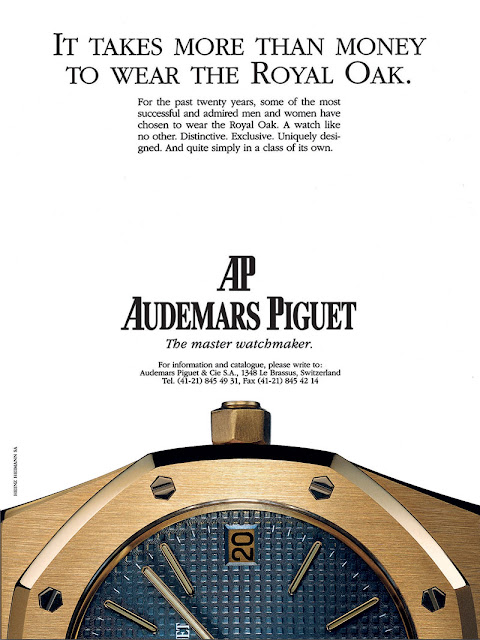
|
| Advertising campaigns emphasizing the exclusivity of the Royal Oak |
Audemars Piguet built a first series of 1000 pieces which is known by collectors as the A-series of reference 5402. It took more than one year for Audemars Piguet to sell all the first 1000 Royal Oaks but then sales finally took off. After the first A-series, Audemars Piguet still used A serial numbers for other 1000 pieces, then passed to B and C serial numbers.
This first Royal Oak A-series is still the most sought after by collectors and it is easy to recognize for the AP initials placed above 6 o'clock rather than at 12 o'clock like successive series.
Over the following years, Audemars Piguet introduced many variations of the original Royal Oak adopting precious metals, leather and rubber straps as well as new technical solutions and complications.
1.4- Royal Oak Offshore Models
The road towards development of any new timepiece can be a tumultuous journey, often met with doubt, second-guessing, technical challenges and fear of the unknown commercial and critical reception that the new model will ultimately receive. In many ways, the development history of the Royal Oak Offshore between 1989 and 1993 mirrors many aspects of the history of its primary source and inspiration – the 1972 Royal Oak. The original Royal Oak, designed by Gerald Genta in the early years of the Quartz Crisis, shattered the boundaries between luxury and sports watches, while challenging all conventions pertaining to the manufacturing and finishing of stainless steel timepieces. The large and meticulously crafted timepiece developed into an icon in the eyes and minds of collectors and enthusiasts, and boldly stands the test of time over four decades since its creation. However, as we all know very well, its path towards success was met with as much doubt and resistance as it was met with acclaim and appreciation.
The genesis of the Royal Oak Offshore begins in 1989 when a talented, young, second generation designer working for Audemars Piguet named Emmanuel Gueit introduced a sketch of a concept that re-imagined the Royal Oak into a more massive, substantial watch that can handle all of the elements and forces of nature that it would encounter on the wrists of the most active and adventure-seeking collectors. Gueit’s conceptual sketches did not receive much fanfare internally. In fact, like several other designs that ultimately found success, the early years of development were a lonely journey. Fortunately, the project was supported by the Joint Chairman of Audemars Piguet at the time. In addition to the support he provided Gueit, he was also the man that ultimately designated the name of the new creation as the Royal Oak Offshore.

While Genta’s original Royal Oak was the definitive source of reference and inspiration for the Royal Oak Offshore, the new design diverged from the original in several significant ways that came to be the defining characteristics of the Royal Oak Offshore. The most pronounced shift was the dramatic case size of 42 mm. While this is standard fare in 2014, it was a shock when introduced in 1993 at BaselWorld. By this time, the watch had already been nicknamed, ‘The Beast’ due to its staggering proportions. In addition to its large size and inclusion of the chronograph complication, several other features jumped out that distinguished the Royal Oak Offshore: the curved links of the bracelet, the massive visible black gasket on the bezel, the silicon caps of the chronograph pushers and crown, the stylized crown protection, and the fact that the movement was able to be placed inside an anti-magnetic cover due to the unprecedented case size.
It is well documented that the initial 100 examples of the Royal Oak Offshore were not engraved with the Royal Oak Offshore designation on the case back as the new model was considered very risky. Only Royal Oak is engraved on this first batch. There are other features that differentiate the earliest examples of Royal Oak Offshore: the first batch had a folding clasp that was soon replaced by an open structure clasp. Furthermore, the extra links on these early examples were secured by four screws, which was later adapted for better functionality. In addition, early examples were sold with distinct octagonal presentation boxes that feature a circular port window on top of the box to view the watch.
The present example, which is part of the permanent collection of the Audemars Piguet Museum, is No. 32 of the first 100 examples produced. As part of this exclusive group, the word Offshore is not engraved on the case back of the watch. The color scheme of these early examples share the same codes as the original 1972 Royal Oak, however keen observers will note that the tapisserie finish on the dial is slightly larger. Collectors of early examples of the Offshore seek to own one of the first 100 that features all of the original characteristics of these celebrated rarities.
Over 20 years have passed since its introduction, and now the ‘Beast’ is truly unleashed. The Royal Oak Offshore line has been one of Audemars Piguet’s primary platforms for innovative case materials and daring design choices as exhibited through the 118 variations of the 42 mm that have been created over the last two decades. It has evolved into an icon in its own right and a symbol of the fusion of luxury and sports aesthetics that challenged all industry standards and expectations when it was introduced in 1993. Like several Audemars Piguet innovations and developments that came prior and since, the Royal Oak Offshore established new benchmarks and ushered in new trends. The Royal Oak Offshore will continue to energize collectors and enthusiasts while generating healthy controversy and debate for the next twenty years and beyond.
Detailing of hand stack on genuine Royal Oak Offshore:

...
...
Last edited by a moderator:


